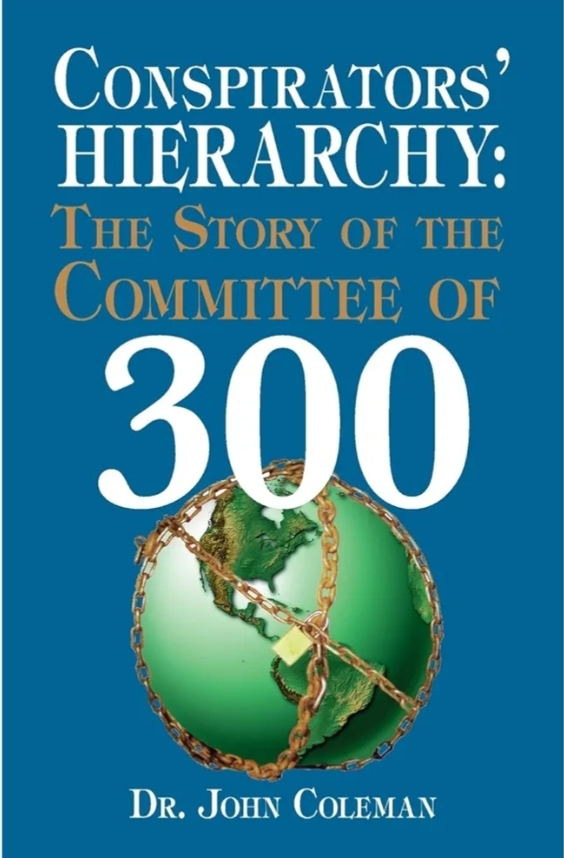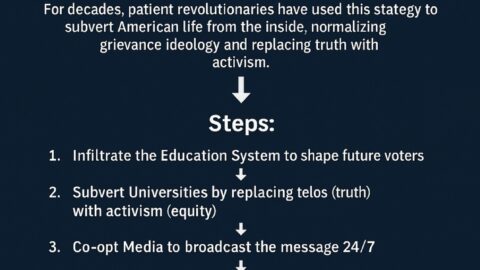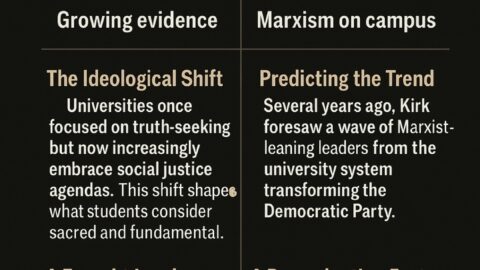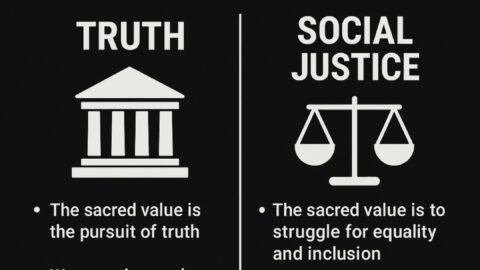“Conspirators’ Hierarchy: The Story of the Committee of 300” by Dr. John Coleman is a controversial work that asserts the existence of a secretive group of global elites—referred to as the “Committee of 300″—that supposedly controls world events and governments for its own agenda. Coleman, a former British intelligence officer, claims that this group comprises aristocratic families, political leaders, financial institutions, and powerful industrialists who have influenced historical events for centuries.
Central Ideas:
The Existence of the Committee of 300:
- Coleman argues that a secretive cabal, the “Committee of 300,” controls the world’s political and economic systems. He claims that this group consists of 300 of the most powerful and influential individuals in the world, including members of royal families, high-ranking politicians, international bankers, and wealthy industrialists.
- According to Coleman, the goal of the Committee is to establish a New World Order (NWO), in which a global, authoritarian government would control all aspects of human life—economics, politics, education, and even religion.
Global Control and Influence:
- Coleman contends that the Committee has orchestrated major global events, such as wars, economic crises, and political revolutions, to further its agenda. He argues that the group manipulates governments, economies, and media outlets to ensure that its plans come to fruition.
- The book details how Coleman believes the Committee controls the flow of information and the educational system, ensuring that people are kept ignorant of the true nature of global power structures.
The Role of Secret Societies:
- Much like other conspiracy theorists, Coleman highlights the role of secret societies in furthering the agenda of the Committee of 300. He names organizations such as the Freemasons, the Bilderberg Group, the Trilateral Commission, and the Club of Rome as key players that operate under the influence of the Committee.
- These groups, according to Coleman, are responsible for influencing international policies and shaping global events to align with the goals of the NWO. He suggests that membership in these societies provides access to power and wealth, making them essential components of the conspiratorial network.
Economic Manipulation and Global Finance:
- One of the main ways the Committee of 300 allegedly exercises its power is through the control of global finance. Coleman claims that international bankers, particularly families such as the Rothschilds and Rockefellers, are key figures in the Committee and that they manipulate the world economy to enrich themselves and consolidate power.
- The Federal Reserve, the International Monetary Fund (IMF), and the World Bank are said to be tools used by the Committee to create economic instability, leading nations to fall under their control through debt and financial dependency.
Political Puppetry:
- Coleman argues that many world leaders, including U.S. presidents, British prime ministers, and other heads of state, are mere puppets controlled by the Committee of 300. He claims that these leaders do not serve the interests of their people, but rather the hidden agenda of the elite.
- Political events, including wars, coups, and revolutions, are described as being orchestrated by the Committee to further its objectives. Coleman contends that wars are particularly useful to the Committee, as they create chaos, increase debt, and allow for greater control over nations.
Population Control and Social Engineering:
- Coleman suggests that part of the Committee’s agenda is to reduce the global population and control human behavior. He claims that social engineering is a key tactic, with the group using media, entertainment, and education to shape public opinion and manipulate societal norms.
- Programs like eugenics and family planning are also cited as examples of how the Committee seeks to control population growth and ensure that only certain groups maintain power.
Drug Trade and Organized Crime:
- Another provocative claim in Coleman’s work is that the Committee of 300 is behind the global drug trade. He argues that drug trafficking is used as a tool to destabilize nations, weaken populations, and generate vast amounts of illegal wealth that can be laundered through global financial systems.
- According to Coleman, powerful families and elites, protected by governments, are involved in these illicit activities, furthering the goals of the Committee by funding covert operations and controlling the masses.
Cultural Manipulation and the Role of the Media:
- Coleman asserts that the Committee controls the media, Hollywood, and the music industry as part of its effort to manipulate culture and society. He believes that entertainment is used to distract people from important political and economic issues, while subtly promoting the values and goals of the NWO.
- He also argues that music, movies, and television are used to promote moral degradation, weaken family structures, and promote consumerism, which keeps the public docile and focused on trivial matters.
The United Nations and Globalism:
- The United Nations (UN) is portrayed as a key institution in the Committee’s quest for global domination. Coleman argues that the UN is not a benevolent organization promoting peace and development, but rather a tool for consolidating power on an international scale.
- Through institutions like the UN, Coleman claims the Committee seeks to implement policies that erode national sovereignty and push the world toward a one-world government.
Origins and Structure of the Committee of 300:
- Coleman claims that the Committee of 300 was established in the 18th century by wealthy and influential families and has since grown into a highly secretive organization. He argues that this group operates behind the scenes, manipulating global events to maintain its power and control.
- According to Coleman, the Committee of 300 consists of the world’s most powerful individuals, including banking magnates, industrialists, and political leaders. He describes the organization as hierarchical and covert, with members exercising influence over various aspects of global governance.
Influence on Global Events:
- The book details how Coleman believes the Committee of 300 has orchestrated significant historical events, including wars, economic crises, and political upheavals. He asserts that these events are part of a broader strategy to destabilize nations and consolidate power.
- Coleman discusses various international organizations, such as the United Nations, International Monetary Fund, and World Bank, and argues that they are tools used by the Committee of 300 to implement its global agenda.
Economic and Political Control:
- Coleman provides an account of how the Committee allegedly manipulates global economies and political systems. He suggests that economic recessions, political instability, and social unrest are engineered by this elite group to further its goals.
- The book also explores the influence of the Committee of 300 on major financial institutions and governments, claiming that it exerts control over key economic policies and decisions.
Social Engineering and Cultural Manipulation:
- Coleman argues that the Committee of 300 engages in social engineering to shape public opinion and culture. He suggests that media, education, and entertainment are used to promote the Committee’s agenda and condition the public to accept its control.
- The book discusses various social and cultural changes, asserting that they are part of a deliberate strategy to create a global society that aligns with the Committee’s objectives.
Conclusion:
“Conspirators’ Hierarchy: The Story of the Committee of 300” by John Coleman presents a provocative view of global politics, arguing that a secretive elite group controls world affairs. The book provides a detailed account of alleged conspiracies and manipulations.
For readers interested in alternative theories of global power and influence, Coleman’s book offers a perspective that challenges mainstream views. However, it is important to approach the content critically and consider the broader context of historical evidence and scholarly analysis when evaluating the claims presented.







